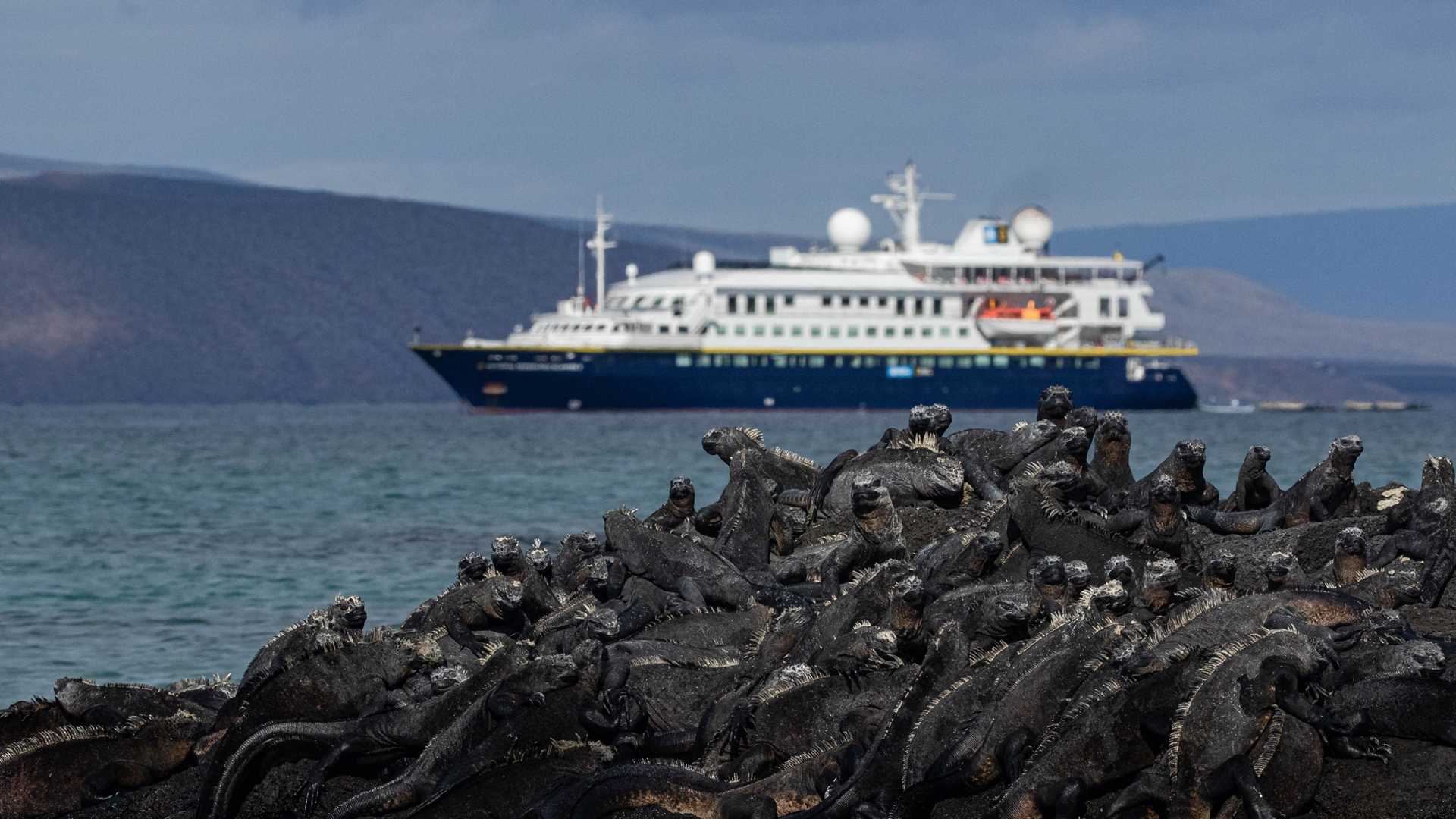We woke up to the incredible view of a series of volcanoes along the coast of Isabela Island. Isabela is the largest island of the Galapagos, and it is home to five species of giant tortoise. After breakfast, we crossed the equator line into the southern hemisphere to explore the “head” of this sea-horse-shaped island. We rode Zodiacs to look for wildlife along the rocky shores of Isabela. We were lucky to spot a couple of Galapagos penguins, flightless cormorants, sea lions, and blue-footed boobies fishing.
After the Zodiac ride, we went deep-water snorkeling with penguins, marine iguanas feeding underwater, and Galapagos sea lions playing with us. Snorkeling was incredible due to the underwater geology and abundant marine life along the northern coast of Isabela.
After lunch, we navigated toward the youngest of the Galapagos Islands: Fernandina. This island lets us travel back in time to see the Galapagos in the beginning without negative human impact. Hundreds of marine iguanas were basking under the equatorial sun. Some iguanas were coming out of the ocean, as they finished their feeding outings. Galapagos flightless cormorants were drying their wings. The young basaltic lava fields here are slowly eroding and serve as the natural habitat for one of the six endemic plant genera of the Galapagos; the lava cactus. These cacti only grow on the youngest of the Galapagos Islands; they are a pioneer species of the archipelago.
After an incredible day in the Galapagos, we returned to the ship and enjoyed a beautiful sunset.







